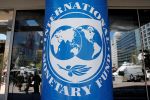STI Dollar cost averaging over past five years delivered 7% p.a.
OREANDA-NEWS. Two popular methods of investing the Straits Times Index (STI) in its Index form, are Exchange Traded Funds (ETFs) and Regular Shares Savings Plans (RSS Plans). The first Straits Times Index (STI) ETF listed just over 15 ago in April 2002, which has since generated a 220.2% total return from inception through to the 9 January 2018 close. The second listed ETF to track the STI, the Nikko AM STI ETF (which debuted near major market lows in February 2009) has since generated a 165.5% total return for investors.
RSS Plans provide an alternative means for investors to build gradual STI exposure, and make use of dollar cost averaging with performance measured by internal return rates. There are four providers of RSS Plans in the Singapore market. They are Phillip Capital (launched in February 2002), POSB and OCBC Bank (which both launched in mid-2013) and Maybank Kim Eng, which launched in early 2015.
The five year history of the STI is illustrated below. The two annotations overlay yesterday’s close price for the Nikko AM STI ETF at S$3.60 per unit, and the month-end price of the Nikko AM STI ETF in January 2013 at S$3.33. Note the December 2017 month-end close price of the Nikko AM STI ETF was S$3.55.
Dollar cost averaging commits a fixed amount of dollars to invest each month, rather than a fixed amount of units (or shares in the case of stocks). This effectively means that the Investor would have purchased more units at market lows and less units at market highs.
For instance, applying month-end STI ETF prices, and a fixed amount of S$1,000 at the end of every month, the Investor would have purchased 373 units of the STI ETF in January 2016 when the units were priced at S$2.68.
Conversely, when the STI ETF units were priced at S$3.57 in April 2015 andNovember 2017, the Investor would have purchased a lesser amount of 280 units. This means that the investor purchased one-third more units in January 2016, near market lows, than in April 2015 and November 2017, near market highs.
The chart below illustrates indicative units that would have been purchased on a RSS Plan on the Nikko AM STI ETF from the end of January 2013, through to the end of December 2017. The example also assumes S$1,000 monthly deposits and investments made at month-end Nikko AM STI ETF prices, which means a total of 60 monthly investments were made.
Like a mortgage, investments are spread over time with dollar cost averaging, hence the traditional measure of Return on Investment (ROI) is less relevant for the RSS Plans. For instance, applying 60 months of S$1,000 investments on the STI ETF would have generated an indicative ROI of S$11,843.21, which represents a 19.7% return on the summed monthly investments of S1,000 which totalled S$60,000. In this example, the monthly S$1,000 investments that spanned January 2013 to December 2017 at month-end Nikko AM STI ETF prices, are valued at the ETF’s closing price of S$3.60 yesterday.
The 19.7% return also includes all dividend distributions of this ETF that went ex-dividend between 1 January 2013 and 9 January 2018. The most recent distribution went ex-dividend on 2 January 2018 which is included in the indicative returns. As noted above, these examples exclude transaction fees.
For dollar cost averaging, S$60,000 is not the relevant base for computing returns. The base started with S$1,000 and has been variable albeit consistently growing by S$1,000 each month. Investing logic means that it would be much easier to make $11,843.21, starting with S$60,000 back at the beginning of 2013, than it would be to make $11,843.21 starting with S$1,000 at the beginning of 2013. Hence for RSS Plans, the Internal Rate of Return (IRR) can be used in place of the aforementioned ROI.
IRR simply compares the equal monthly instalments to the current value of the portfolio and computes an annualised return that would have been necessary to achieve the current portfolio value. Hence based on equal monthly payments of S$1,000 over the past 60 months, and the current portfolio value, the RSS Plan on the Nikko AM STI ETF would have had to achieve a 7.1% annualised return.
Hence this is a return rate, in addition to a indicative return because the portfolio value is based on month-end STI ETF prices.
Had this STI ETF closed at S$3.00 yesterday, the IRR would have been a rate of return of 0.4% p.a. and had the STI ETF ended at S$3.70, the IRR would have been 8.1% p.a. Hence, market risk is still an inherent part of an RSS Plan, albeit less than lump-sum investing due to the dollar cost averaging.




Комментарии